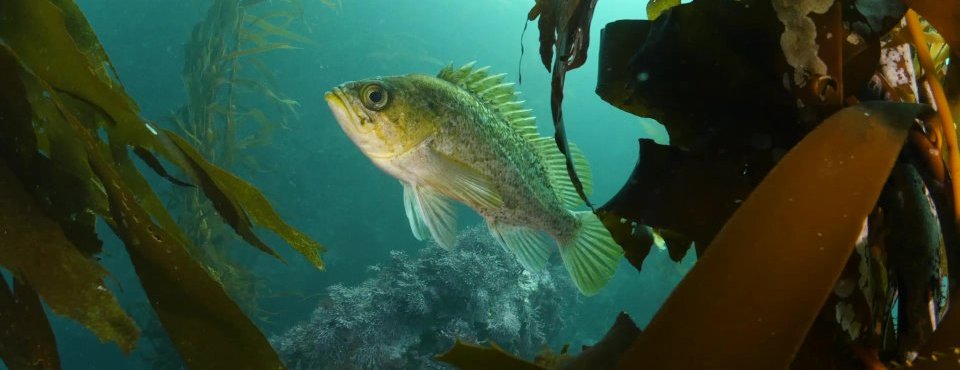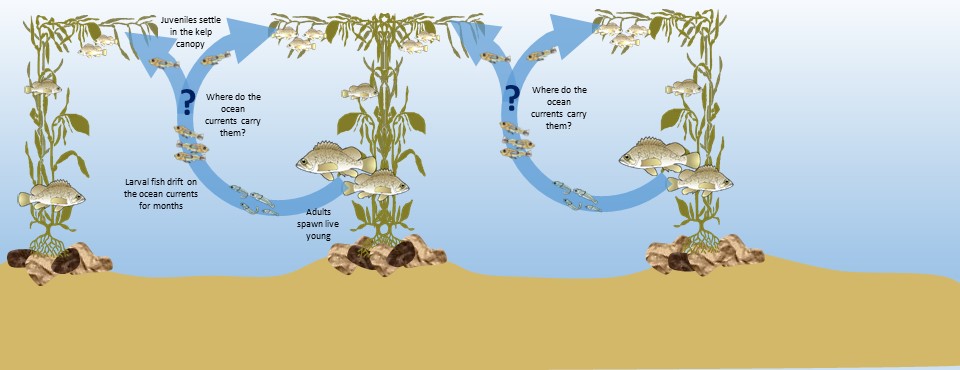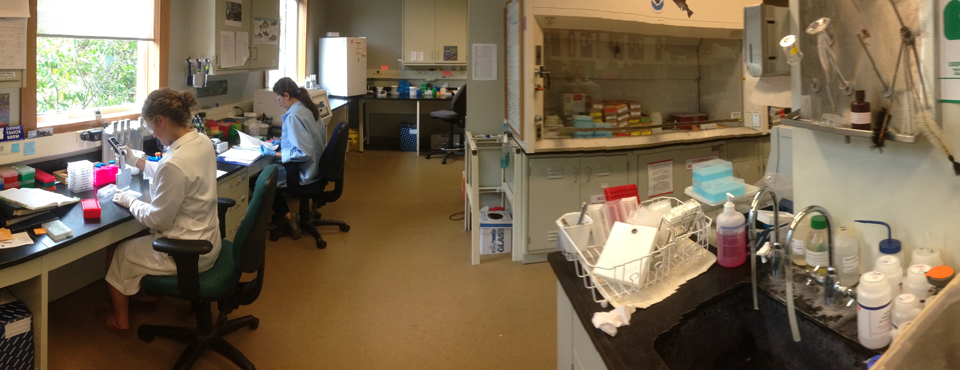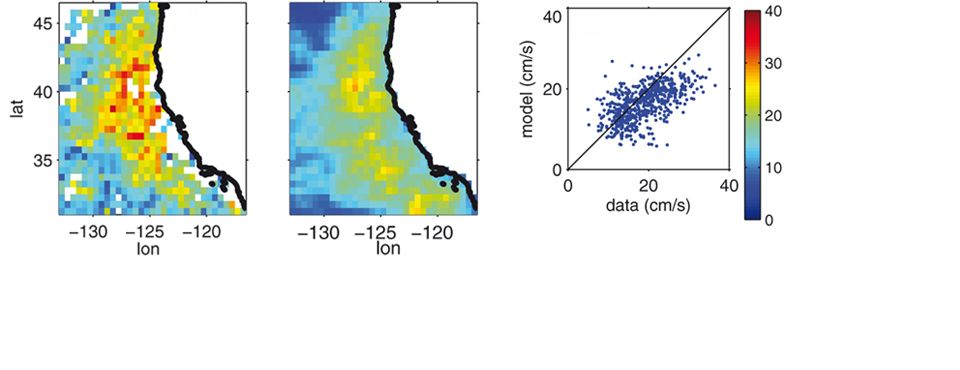
Ecology - Population Connectivity
Kelp forest fishes are ideal for studying larval transport because the adults move little (less than a kilometer) and the larvae can be transported long distances (tens of kilometers). Using genetics to identify parent-offspring matches, we can determine the birthplace and destination of larvae. The trajectories of larval transport determine how populations along the coast contribute to replenishment of one another.

Genetics - Parentage Analysis
Because fish produce thousands of young that are transported great distances, the likelihood of sampling both an adult and its offspring requires the genetic sampling of huge numbers of individuals. Recent developments in genetic research enables us to test for parentage in the large sample sizes we need to successfully identify parent-offspring matches.

Oceanography - Current Models
Oceanographic models that estimate the direction and speed of ocean currents can both explain and predict the destination of larvae. We can use these models to explain the observed destinations of larvae determined by the parentage analyses and predict the destination of larvae , including those produced within marine protected areas.



